#union cycliste internationale
Text

Born on 5 September 1949 in Dublin, Ireland, Patrick "Pat" McQuaid is an Irish former road racing cyclist who served as the president of the Union Cycliste Internationale from 2005 to 2013.
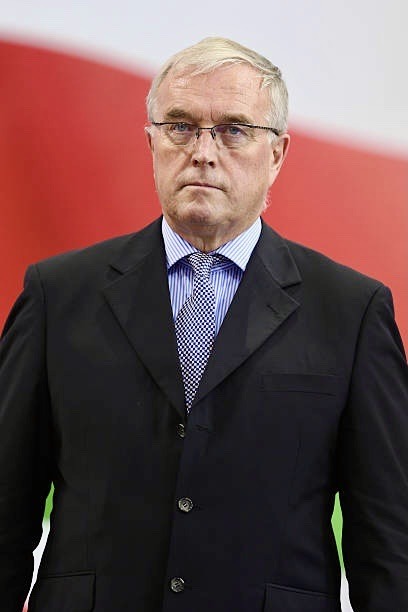

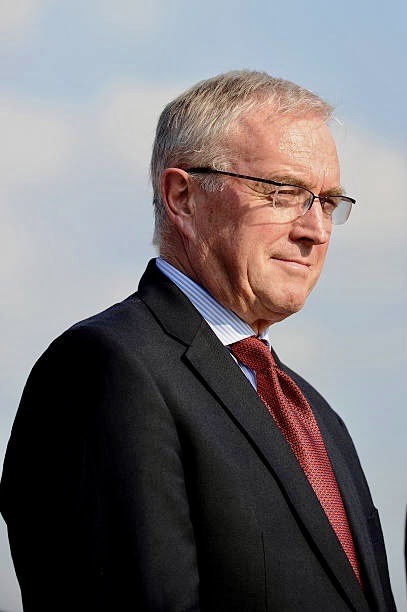
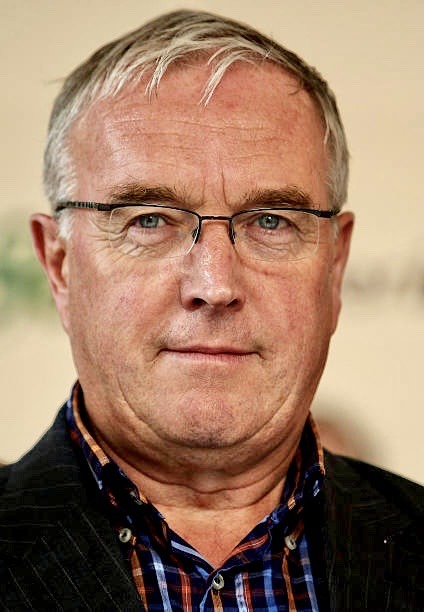





74 notes
·
View notes
Text
Virginia’s Blue Ridge TWENTY24 returns to UCI status
Virginia’s Blue Ridge TWENTY24 returns to UCI status
Virginia’s Blue Ridge TWENTY24 is announcing its transition back to a Union Cycliste Internationale (UCI) team. The team has a roster representing dynamic and diverse professionals in road, track, mountain biking, gravel, ultra, eSports, and para-cycling. Since its inception 18 years ago, VBR TWENTY24 athletes have earned 14 Olympic and Paralympic medals. The team is home to the only integrated…

View On WordPress
#focus#Olympic#sports director#time trial#Track World Championships#UCI#Union Cycliste Internationale#USA#USA Cycling#women
0 notes
Text

I haven't seen anyone talking about Valtteri calling out the Union Cycliste Internationale for not broadcasting the women's race.
Go Val, tell them! 👏
349 notes
·
View notes
Text
Cycling has become the first sport to impose stricter rules on transgender women in the wake of the toxic row around Emily Bridges and Lia Thomas.
The Union Cycliste Internationale (UCI) announced it was halving the maximum permitted plasma testosterone for trans women to compete in the female category from 5 nmol/L to 2.5 nmol/L and doubling the period they must remain below that threshold before being allowed to compete from one to two years.
The rule change, which comes into force on July 1, may stop Bridges racing in women’s events on the “UCI international calendar” until the summer of 2024, denying her the chance to qualify for the next Olympics.
It was announced two months after British Cycling suspended its own trans policy amid a major backlash against Bridges’ plans to switch from racing in men’s events and take on the likes of Dame Laura Kenny at the National Omnium Championships.
The event had faced a rider boycott were Bridges allowed to compete a year after she began complying with the current rules.
Confirmation of the change also came three days before Fina, swimming’s world governing body, was expected to introduce new transgender rules.
Those could deny Thomas, who in March became the first trans woman to win a National Collegiate Athletic Association title, a place at Paris 2024 as well.
The UCI said in a statement: “In March 2020, the UCI published rules governing the participation of transgender athletes in events on the UCI International Calendar in the category corresponding to their new gender identity.
“Although these rules are stricter and more restrictive than those published by the International Olympic Committee (IOC) in 2015, the UCI has begun consideration on their adjustment following the publication of new scientific studies in 2020 and 2021.
“The principle of eligibility of transgender athletes (in particular female athletes, ie those who have made a transition from male to female) is based on the reversibility under low blood testosterone (the level commonly observed in ‘born female’ athletes) of the physiological abilities that determine sports performance, and on the time needed to achieve this reversibility.
“The latest scientific publications clearly demonstrate that the return of markers of endurance capacity to ‘female level’ occurs within six to eight months under low blood testosterone, while the awaited adaptations in muscle mass and muscle strength/power take much longer (two years minimum according to a recent study).
“Given the important role played by muscle strength and power in cycling performance, the UCI has decided to increase the transition period on low testosterone from 12 to 24 months. In addition, the UCI has decided to lower the maximum permitted plasma testosterone level (currently 5 nmol/L) to 2.5 nmol/L. This value corresponds to the maximum testosterone level found in 99.99% of the female population.
“This adjustment of the UCI’s eligibility rules is based on the state of scientific knowledge published to date in this area and is intended to promote the integration of transgender athletes into competitive sport, while maintaining fairness, equal opportunities and the safety of competitions.
“The new rules will come into force on 1st July. They may change in the future as scientific knowledge evolves.
“Moreover, the UCI envisages discussions with other international federations about the possibility of supporting a research programme whose objective would be to study the evolution of the physical performance of highly trained athletes under transitional hormone treatment.”
The UCI also published a paper written by its medical director, Professor Xavier Bigard, entitled: ‘The current knowledge on the effects of gender-affirming treatment on markers of performance in transgender female cyclists’.
18 notes
·
View notes
Photo
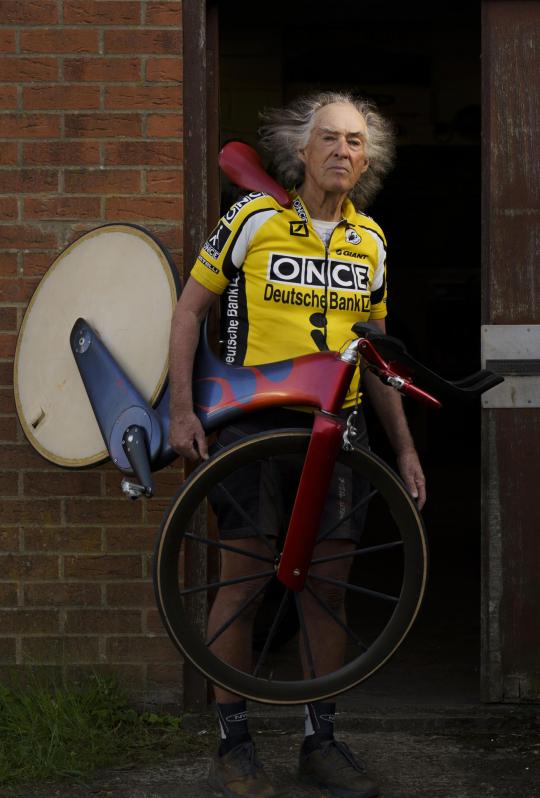
In 1992 Mike Burrows, who has died age 79 of cancer, watched Chris Boardman win the 4,000-metre individual bicycle pursuit final at the Barcelona Olympics. Boardman was riding the Lotus 108 model that Mike had developed with Lotus Engineering, and the combination won Britain its first Olympic gold medal in the sport for 72 years.
Mike’s background as an engineer lay in running his own company in Norwich in the 1970s, producing packaging machines. When his car broke down he took to cycling, devising his own recumbent bicycles and tricycles, with the rider lying back for optimal aerodynamics and having the pedals in front, rather than below.
He considered that the bicycle’s established form was too widely taken as given, to the detriment of innovation. The increasing interest in a wide range of human-powered vehicles in the 1980s liberated his imagination to the point that he could joke: “I’m not the best bicycle designer in the world, I’m the only bicycle designer in the world.”
His breakthrough came from looking beyond the metal – usually steel – tubes that bicycles were conventionally made of. A friend’s father in the aviation industry supplied him with some off-cuts of carbon fibre.
Impregnated with resin, this could be moulded into a strong aerodynamic shape, ideal for track racing. The term monocoque is used for a structure whose loads and forces are held together within a single skin, and Mike said that the imaginative leap needed for his novel vehicle came from seeing a sculpture by Barbara Hepworth.
When, in 1985, the British Cycling Federation put Mike’s monocoque bicycle to the sport’s governing body, the Union Cycliste Internationale (UCI), based in Switzerland, it was rejected. But Mike’s friend Rudy Thomann, who worked for Lotus, got the car manufacturer interested, and in 1990 approval was secured from the UCI.
Unlike most people in the bicycle industry at the time, Mike paid constant attention to aerodynamics. The wind-tunnel testing of the Lotus bicycle indicated time advantages against a regular bicycle similar to those by which Boardman went on to victory over the German pursuit world champion, Jens Lehmann.
The 1992 triumph was not celebrated by the UCI. Mike appreciated concerns that expensive bikes built for rich-world athletes gave unfair advantage, but was convinced that if an event such as the Tour de France could use his faster machines, built on monocoques and aerodynamics, for even its prologue or a time trial, it would showcase the bicycle as a cutting-edge vehicle of the future, rather than of the past. Boardman rode the Lotus to a time-trial victory at the Tour in Lille in 1994, setting a record average speed that stood for more than two decades, convincing both Mike and the UCI that each was right.
That year Mike was recruited by the bicycle manufacturer Giant in Taiwan, from where he oversaw a quieter design revolution, creating the Giant TCR (Total Compact Road) model that has influenced every road bicycle since, perfecting geometries so that the same frame could be made to fit riders of different heights. The development allowed greater standardisation and thus commercialisation of road bicycles, with no compromise in frame rigidity and power. He also worked on mountain bikes and the Giant Halfway folding bike.
In 1996, the UCI produced the Lugano Charter, in effect a formal response to the success and controversy engendered by Mike’s radical designs. It ordained that the sport of cycling should be one of athletes, rather than engineers, and so put down rigid engineering limitations that were the antithesis of Mike’s quest for greater efficiency and speed. As he put it: “I left Giant in 2000 because the UCI was stopping me building better bikes. In the pro scene they are now all production-only.”
After returning from Taiwan, Mike focused on recumbent bicycles and tricycles, seeking further aerodynamic gains. He was a stalwart of the British Human Power Club, organising race track days for club championships, and took pleasure in getting faster each year by virtue of engineering gains that could outstrip his own ageing.
For all that he loved going fast, a pursuit of efficiency motivated him more than speed, and convenience was central to his affection for the engineering opportunities the bicycle afforded. I came to know him through efforts to commercialise the 8Freight, his cargo bicycle named after an old British Rail engine and designed with a relaxed position and steering intended to ensure that everyone – couriers, parents on school runs, gardeners carrying tools and earth – could take easily to it. He believed that bicycles offered the possibility of a better, more efficient society.
Mike was born in St Albans, Hertfordshire, where his father was a cabinet maker who later opened a toy shop, enabling Mike to play with model planes. After leaving school at 15, Mike worked as a machine engineer, married his wife, Tuula, and in 1969 moved to Norwich to work on boats used on the Norfolk Broads. His first engineering success was a machine that packed individual bags of crisps into multipacks, and he set up his own business. An engineering perspective that came from outside bicycle design was often credited for his future willingness to slay its sacred cows, a mission that became a defining feature of his life’s work.
All this was realised in a workshop that was a place of easels and heavy machine tools used if Mike needed to make or modify a part. He always wore overalls and wooden clogs, classical music played, and an archive of newspaper clippings, memorabilia and the bikes themselves gave the air of a living museum. When out birdwatching in the Norfolk countryside he was still open to engineering inspiration.
His book Bicycle Design: Towards the Perfect Machine (2000), went through a number of editions, its title encapsulating his commitment to the vehicle he loved.
He is survived by Tuula and their son, Paul.
🔔 Mike Burrows, bicycle designer, born 17 April 1943; died 15 August 2022
Daily inspiration. Discover more photos at http://justforbooks.tumblr.com
13 notes
·
View notes
Text
The Union Cycliste Internationale (UCI) has announced that it is ending the participation of transgender athletes in female events, quoting scientific research which it says suggests that there are advantages which may persist post-transition.
“From now on, female transgender athletes who have transitioned after (male) puberty will be prohibited from participating in women’s events on the UCI International Calendar – in all categories – in the various disciplines,” the governing body said in a statement on Friday.
In May of this year the UCI had said that it would make a final decision at its annual congress in August but has now done so several weeks ahead of that date. It explained on Friday why it has reached its decision....
Previously UCI rules enabled trans women to compete in women’s events once their testosterone levels had been below 2.5 nanomoles per liter for at least two full years....
It is not clear what provisions could exist for transgender athletes in future competition, other than in international Masters events. The UCI said that these events would see the men’s category renamed men/open, and that those athletes who do not meet the conditions for participation in women’s events will be admitted without restriction.
So events are going to be divided into cis women (and trans women who got puberty blockers, I guess?) and everyone else? Well that's insulting on multiple levels.
Interesting how this comes on the heels of Austin Killips winning the Tour of the Gila, even when she met the testosterone level requirement.
She can't just be good.
1 note
·
View note
Photo

Reposted from @brotures_kichijoji If you re-blog please don't remove the credits 🙏🙂 ■LOOK 875 Madison RS □Frame Set ¥264,000- □Show Custom ¥833,887- フランス・ヌヴェールに本社を置くLOOK CYCLE INTERNATIONAL、通称 LOOK のトラックフレーム 875 Madison です。 UCI(UNION CYCLISTE INTERNATIONALE / 国際自転車競技連合)認定をクリアしており、オリンピックをはじめとする世界選手権にも出走可能なプロスペックの一本�� 今回は、前後ブレーキの装着が可能で、日本でも法的に公道を走行できるタイプをフルカスタムで組み上げました。 @lookcycle #leaderbikes #leader #brotures #brotures_kichijoji #fixed #fixedbike #fixedgear #fixie #ピスト #ピストバイク #trackbike #cycle #instabike #cyclist #fix #fixie #bike #bikelife #ブローチャーズ #philwood #envecomposites #ridededa #mks https://www.instagram.com/p/CmLAvQTuUYH/?igshid=NGJjMDIxMWI=
#leaderbikes#leader#brotures#brotures_kichijoji#fixed#fixedbike#fixedgear#fixie#ピスト#ピストバイク#trackbike#cycle#instabike#cyclist#fix#bike#bikelife#ブローチャーズ#philwood#envecomposites#ridededa#mks
3 notes
·
View notes
Text
Congratulations to Ava Holmgren the fastest woman in the Verge Northampton International Cyclocross
https://komonews.com/news/nation-world/trans-cyclist-wins-elite-womens-division-race-in-massachusetts-transgender-austin-killips-verge-northampton-international-cyclocoss
NORTHAMPTON, Mass. (TND) — A transgender athlete took the top spot in an elite women's division cycling race in Massachusetts over the weekend.
It's just the latest example of trans athlete dominance that has critics claiming a lack of fairness in women's sports over transgender inclusion.
Sports organizations continue to face backlash for perceivably prioritizing inclusivity over concerns about fairness.
Austin Killips, a 27-year-old transgender woman, claimed victory in the Verge Northampton International Cyclocross held in Northampton on November 12. Her winning time was 50 minutes and 25 seconds.
Second place went to 17-year-old Ava Holmgren of Canada, who was just one second slower than Killips. Third place went to fellow American Lizzy Gunsalus, a 19-year-old, who was just six seconds slower than the winner.
Critics lambasted Killips's win. Many took issue with Northampton International's event policy of allowing her to compete in the women's field. Some likened it to cheating, and others congratulated Holmgren and Gunsalus instead of Killips, as they were both born female.
Yet, according to the rules, Killips is allowed to compete in the women's division. In fact, Northampton International seemingly celebrates the inclusion of trans athletes in the event's inclusion policy.
The Northampton International organization firmly believes that all attendees should have an equal opportunity to participate in our event regardless of their race, color, religion, disability, age, gender identity, sexual orientation, or national origin," the policy reads.
We recognize that participation in sport is a human right," the policy continues. "We strive to create an enjoyable event for those currently active in cyclocross in all the different ways they participate, and an inviting one for those who have not joined us yet."
Northampton International adds in the policy that it follows inclusion rules set by USA Cycling and the Union Cycliste Internationale (UCI).
UCI, the international governing body for competitive cycling, released new guidance on transgender athlete inclusion in June. That guidance tightened restrictions on displayed testosterone levels of transgender athletes, especially those competing against women.
see rest of article
3 notes
·
View notes
Text
0 notes
Text
Mountain bike, ad agosto torna il Rally di Sardegna
Il Rally di Sardegna MTB – Stage
Race va in doppia cifra e lo fa con l’importante novità
dell’affiliazione Uci (Union Cycliste Internationale), il
massimo organismo ciclistico internazionale.
Dal 27 al 31 agosto torna la corsa a tappe riservata agli
specialisti della Mountain bike. Organizzato dalla Wild Track
ASD sotto l’egida della Federazione Ciclistica Italiana e
dell’Unione Ciclistica…
View On WordPress
0 notes
Text
The Disciplines of the UCI Mountain Bike World Cup
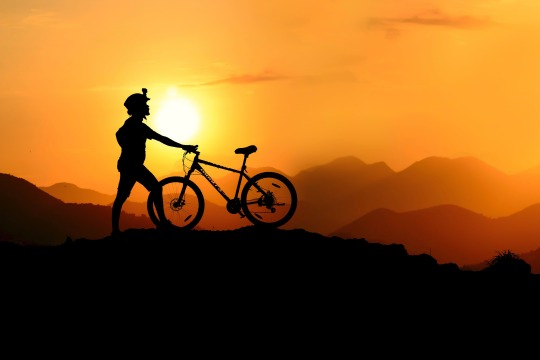
In the UCI Mountain Bike World Cup, riders from around the globe show their skills on diverse and challenging terrains in a series of events before a champion is crowned. Although mountain bike competitions took place in the 1980s in California, the UCI (Union Cycliste Internationale) first recognized the sport in 1990 when the UCI Mountain Bike World Championships were held in Durango, Colorado.
Over three decades later, the World Cup showcases a range of mountain biking events for participants and spectators. The championship includes various disciplines, from the established Cross-Country races to recent additions like Alpine Snow Bike.
Cross-Country Olympic (XCO) is the most popular mountain biking race. As the name suggests, it is in an Olympic Games format. The epitome of endurance and skill, XCO blends technical climbs with descents. The varied terrain ranges from dense forests to open mountainsides. Competitors navigate challenging trails, surmounting natural obstacles at speed amid the demands for precision.
Cross-Country Marathon (XCM) adds an extra challenge to the traditional cross-country format. XCM extends from 23 to 62 miles, often covering diverse and demanding terrain in mountainous areas. Riders navigate a mix of technical climbs and descents in a test of endurance. The format includes trails and man-made features.
The Cross-Country Eliminator (XCE) adds sprinting by condensing cross-country racing into short, intense heats. This race takes place on a compact course with challenging features, including jumps and tight corners. The competitions begin with 32 men and 15 women competing in a series of elimination rounds, until the four fastest men and four fastest women riders compete in their respective finals.
Downhill racing (DH) is a challenging test of riders’ skills as they navigate steep, treacherous descents filled with jumps, drops, and technical features. Gravity plays a crucial role as an ally and adversary, with competitors racing downhill at over 40 miles per hour, displaying unparalleled bike-handling skills.
In the 4-Cross (4X), riders compete head-to-head on a short technical course filled with jumps, berms, and other challenging features. Four riders race against each other in every heat, with the top finishers advancing to the next round. The tight corners and strategic passing opportunities make 4X racing unpredictable.
Enduro racing (END) is reminiscent of the early days of mountain biking, combining the downhill speed with the physical demands of cross-country. Enduro racing emphasizes all-around skill, as riders balance speed with endurance and technical abilities. Enduro races often include technical descents, jumps, and steep climbs.
Alpine Snow Bike is the latest addition to the UCI mountain biking calendar, introduced in 2019. This discipline transforms the UCI Mountain Bike World Cup into a winter sport. Held on snow-covered trails, the race features challenging alpine terrain requiring mountain bikes equipped with fat tires for optimal traction. Alpine Snow Bike adds a seasonal twist to the World Cup, showcasing the adaptability and skill of mountain bikers conquering diverse, challenging environments.
Each race demands a unique set of skills and highlights the versatility of elite riders. From the challenging climbs of Cross-Country to the descents of Downhill and the explosive sprints of XCE, the UCI Mountain Bike World Cup celebrates mountain biking in all its forms. As riders conquer the toughest terrain and push the boundaries of their abilities, the UCI Mountain Bike World Cup continues to be a dynamic, ever-evolving spectacle.
1 note
·
View note
Text
Lotto-Dstny-køreren Maxim Van Gils er udelukket
Road racing har mange strenge regler, ikke kun streng kontrol med stofbrug, men også forskellige adfærd hos kørere, der truer andre under løbet. Lotto-Dstny-køreren Maxim Van Gils er blevet suspenderet i 25 dage. Maxim Van Gils' handlinger sætter fokus på LottoNL-Jumbo Cykeltrøje, og han vil blive holdt ansvarlig for sine forseelser.
Maxim Van Gils deltog i et racerløb for Lotto-Dstny i oktober i år, da han angreb en anden kører før målstregen. Maxim Van Gils' opførsel blev filmet af begivenhedsovervågningen, og hans opførsel tiltrak Union Cycliste Internationales opmærksomhed. Han bringer ikke kun en dårlig side til fansene, han bringer også andre bilisters sikkerhed i fare. Enhver kører, der deltager i et landevejsløb, skal overholde løbets regler. Maxim Van Gils' straf starter i januar, og han har misset to vigtige kampe på grund af det. Union Cycliste Internationale vil ikke tolerere, at ryttere bryder reglerne, og en sådan adfærd påvirker løbssikkerheden. Rytteren, der blev angrebet af Maxim Van Gils, var iført en hvid Billigt Cykeltøj og var rasende over det, han var blevet behandlet med.
Udover at Lotto-Dstny-kørere står over for straffe, står teamdirektøren også over for straffe. Deres handlinger havde en negativ indvirkning på Lotto-Dstny, og direktøren er blevet fyret fra holdet. Lotto-Dstny håber at møde fansene med en bedre rekord i stedet for at blive kritiseret af individuelle mennesker, der påvirker holdet. Den nye sæson er endnu ikke startet, og Lotto-Dstny har travlt med at håndtere problemer på holdet.
0 notes
Text
Tramadol en el ciclismo: Descubre por qué está prohibido y sus consecuencias
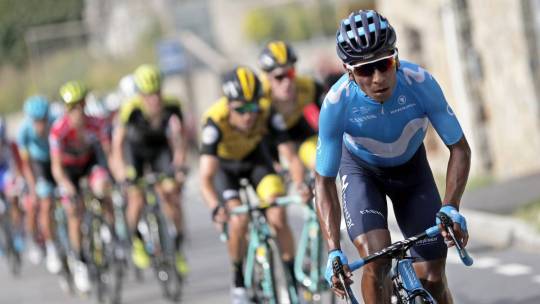
Tramadol es un analgésico que se usa para tratar el dolor de moderado a intenso. Es un opioide sintético que puede provocar somnolencia, mareos y alteración de la coordinación, entre otros efectos secundarios. Tramadol está en la lista de sustancias prohibidas de la Agencia Mundial Antidopaje (AMA) en deportes, incluido el ciclismo. El uso de Tramadol en ciclismo está prohibido porque puede usarse para enmascarar el dolor y la fatiga, lo que puede dar a los ciclistas una ventaja injusta sobre sus competidores.
Tramadol también puede ser adictivo y causar graves problemas de salud si se usa incorrectamente. El uso de Tramadol en el ciclismo ha sido un tema controvertido: algunos argumentan que debería prohibirse por completo, mientras que otros argumentan que debería permitirse por razones médicas. Sin embargo, la UCI (Union Cycliste Internationale) ha prohibido el uso de Tramadol en competición, y los corredores que den positivo en Tramadol pueden enfrentarse a medidas disciplinarias, incluidas multas y suspensiones.
¿Por qué el tramadol está prohibido en el ciclismo?
Tramadol es un analgésico opioide sintético que se utiliza para tratar el dolor de moderado a intenso. Está prohibido circular en bicicleta por los siguientes motivos:
- Tramadol se puede utilizar para enmascarar el dolor y la fatiga, lo que puede dar a los ciclistas una ventaja injusta sobre sus competidores.
- Tramadol puede provocar somnolencia, mareos y problemas de coordinación, entre otros efectos secundarios, que pueden resultar peligrosos para los ciclistas, especialmente cuando circulan a altas velocidades.
- Tramadol puede ser adictivo y causar graves problemas de salud si se usa incorrectamente.
- El uso de Tramadol en ciclismo se ha relacionado con varios casos de abuso, utilizándolo algunos ciclistas para recuperarse más rápido después de un ejercicio intenso o para forzar sus límites.
La Agencia Mundial Antidopaje (AMA) incluye al Tramadol en su lista de sustancias prohibidas en deportes, incluido el ciclismo, desde 2019. El uso de Tramadol en el ciclismo se considera una violación de las regulaciones de la UCI (Union Cycliste Internationale), y los ciclistas que den positivo en Tramadol pueden enfrentar acciones disciplinarias, incluidas multas y suspensiones.
Cómo se detecta el uso de tramadol en los ciclistas
Tramadol es un analgésico opioide sintético que se utiliza para tratar el dolor de moderado a intenso. Está prohibido en el ciclismo debido a su potencial para enmascarar el dolor y la fatiga, lo que puede dar a los ciclistas una ventaja injusta sobre sus competidores.
El uso de Tramadol en el ciclismo se considera una violación de las regulaciones de la UCI (Union Cycliste Internationale), y los ciclistas que den positivo en Tramadol pueden enfrentar acciones disciplinarias, incluidas multas y suspensiones. La detección de Tramadol en ciclistas se realiza mediante análisis de sangre y orina. Las pruebas pueden detectar la presencia de Tramadol y sus metabolitos en el organismo.
La UCI ha implementado estrictas medidas antidopaje para detectar el uso de Tramadol en el ciclismo, y los ciclistas están sujetos a pruebas aleatorias durante las competiciones y los entrenamientos. El uso de Tramadol en ciclismo se ha relacionado con varios casos de abuso, utilizándolo algunos ciclistas para recuperarse más rápido después de un ejercicio intenso o para forzar sus límites. La UCI ha prohibido el uso de Tramadol en competición para proteger la salud y la seguridad de los ciclistas y garantizar una competición justa.
Qué medidas ha tomado la uci para prevenir el uso de tramadol en el ciclismo
La Union Cycliste Internationale (UCI) ha tomado varias medidas para prevenir el uso de Tramadol en el ciclismo. Tramadol es un analgésico opioide sintético que se utiliza para tratar el dolor de moderado a intenso y está prohibido en el ciclismo debido a su potencial para enmascarar el dolor y la fatiga, lo que puede dar a los ciclistas una ventaja injusta sobre sus competidores. Estas son algunas de las medidas tomadas por la UCI:
- La UCI ha prohibido el uso de Tramadol en competición desde el 1 de marzo de 2019, para proteger la salud y la seguridad de los ciclistas y garantizar una competición justa.
- La UCI ha implementado estrictas medidas antidopaje para detectar el uso de Tramadol en el ciclismo y los ciclistas están sujetos a pruebas aleatorias durante las competiciones y los entrenamientos.
- La UCI ha aumentado las sanciones para los corredores que den positivo a Tramadol, incluidas multas y suspensiones.
- La UCI ha trabajado con agencias nacionales antidopaje para crear conciencia sobre los peligros del Tramadol y educar a los ciclistas sobre los riesgos del uso de esta sustancia.
- La UCI ha alentado a los ciclistas a utilizar estrategias alternativas para el manejo del dolor, como analgésicos no opioides, fisioterapia y descanso.
En general, la UCI ha adoptado una postura firme contra el uso de Tramadol en el ciclismo y ha implementado varias medidas para prevenir su uso. El uso de Tramadol en el ciclismo se considera una violación de las regulaciones de la UCI, y los ciclistas que den positivo en Tramadol pueden enfrentar acciones disciplinarias.
Read the full article
0 notes
Text
Urubici (SC) recebe eventos internacionais de ciclismo de estrada

Publicidade

A Serra Catarinense será o centro das atenções do ciclismo mundial na próxima semana. De 3 a 5 de outubro, Urubici sediará três importantes eventos do calendário mundial de Ciclismo de Estrada.
O Gran Tour Ciclismo de Santa Catarina, o GP Urubici de Ciclismo e o GP Internacional de Ciclismo distribuirão pontos para o ranking da UCI (Union Cycliste Internationale), válidos para a classificação para as Olimpíadas de Paris, no próximo ano.

Catarinense André Gohr (centro) está confirmado nas disputas
“Recebemos com muita honra eventos de diversos âmbitos, mas certamente, estas provas internacionais de ciclismo contribuem ainda mais para impulsionar a economia e o turismo, colocando Urubici no cenário global da modalidade, atraindo atletas e visitantes de diversos países.
E claro, sediar eventos desse nível, é uma oportunidade para os moradores de Urubici além de contribuir para o desenvolvimento do esporte na região, estimulando a prática do ciclismo e inspirando jovens a se tornarem atletas e se envolverem na modalidade, criando uma cultura esportiva mais ativa e saudável”, comenta a Prefeita de Urubici, Mariza Costa.
A programação das etapas começa na terça-feira (3), com o Gran Tour Ciclismo de Santa Catarina. Os atletas enfrentarão um percurso de 128,7 km na categoria masculina, enquanto as mulheres terão pela frente um trajeto de 111,5 km.
Na quarta-feira (4), será a vez do GP Urubici de Ciclismo, com provas de 79,7 km para os homens e 62,2 km para as mulheres. O GP Internacional de Ciclismo encerra a programação de eventos na quinta-feira (5), apresentando as provas mais longas: 169,4 km para os homens e 128,7 km para as mulheres.
Publicidade

Atletas de 10 países competirão em Urubici
No total, atletas de 10 países competirão na Serra Catarinense em busca de pontos e da premiação de R$ 65.000,00. Além da Seleção Brasileira da modalidade, estão confirmados ciclistas da Argentina, Bolívia, Colômbia, Estados Unidos, Panamá, Paraguai, Uruguai, Uzbequistão e Venezuela.
Os três eventos têm classificação 1.2 e oferecem 40 pontos no ranking mundial.
Sete vezes campeão brasileiro, o catarinense André Gohr, de Brusque, estará nas disputas em Urubici. “Os eventos em Urubici serão extremamente importantes na busca pela vaga olímpica.
Há muito tempo não tínhamos competições válidas pelo ranking mundial no Brasil, e ter a oportunidade de competir em provas desse nível em Santa Catarina é um privilégio. Ainda mais por se tratarem das últimas provas do ano, que somam pontos no ranking olímpico”, comenta.
Publicidade

Melhor brasileiro no ranking mundial 2021/2022, ele comenta ainda sobre a preparação para os eventos. “Minha expectativa é muito boa. Realizei um training camp de um mês na Colômbia, onde treinei em altitude, com foco nessas provas.
Sinto-me muito bem e motivado, em uma forma física excelente. Espero poder disputar a vitória nesses três dias de provas e acumular pontos em busca da vaga olímpica”, encerra o catarinense.
O Gran Tour Ciclismo de Santa Catarina, GP Urubici de Ciclismo e GP Internacional de Ciclismo são válidos pelo calendário da UCI (Union Cycliste Internationale). A organização é da CBC (Confederação Brasileira de Ciclismo) em parceria com a FCF (Federação Catarinense de Ciclismo) e AACESC.
As provas contam com os patrocínios da C Pack, Supermercados Koch, SOS Distribuidora de Alimentos, Unifique, Shimano e Riders. O evento conta com o apoio da Lei de Incentivo ao Esporte do Governo Federal, e apoio institucional da Prefeitura Municipal de Urubici, Governo do Estado de Santa Catarina e Fesporte.
Siga-nos no Instagram :-)
Ver essa foto no Instagram
Uma publicação compartilhada por Portal Urubici (@urubici.com.br)
Gostou deste conteúdo? Clique em curtir 👍
Deixe seu comentário, participe! 😀
Equipe Portal Urubici
Publicidade

Referência
Urubici (SC) recebe eventos internacionais de ciclismo de estrada | pedal.com.br . [S.I.] 2023.
Acesso em: 27 de setembro de 2023.
0 notes
Text
Women in Bike Racing: Breaking Stereotypes

In the exhilarating world of bike racing, women have been shattering stereotypes, pushing boundaries, and proving that speed, skill, and determination are not defined by gender. Over the years, female cyclists have risen to prominence, challenging traditional perceptions and inspiring a new generation of riders. In this article, we'll celebrate the remarkable women in bike racing who are breaking stereotypes and making their mark on the sport.
Equal on the Track:
Historically, bike racing was a male-dominated sport, but times have changed. Today, women's cycling enjoys equal recognition and opportunities. The UCI (Union Cycliste Internationale) has played a crucial role in promoting gender equality in the sport, ensuring that female athletes receive the same respect, resources, and support as their male counterparts.
Strong Advocates:
Female cyclists have become strong advocates for gender equality in the cycling world. They have pushed for equal pay, more televised coverage, and greater representation in races, helping to level the playing field for future generations of women riders.
Inspiring Young Talent:
Seeing women compete at the highest levels of bike racing serves as an inspiration to young girls who aspire to take up the sport. Female riders have become role models, proving that dedication and hard work can lead to success regardless of gender.
Breaking Records:
Women in bike racing are breaking records and achieving remarkable feats. From conquering grueling mountain stages to setting new time trial records, they are proving that they are among the best athletes in the world.
Diversity in Disciplines:
Women have excelled in various cycling disciplines, from road racing and mountain biking to track cycling and cyclocross. Their versatility and skill demonstrate that women are capable of mastering any aspect of the sport.
Empowering Communities:
Women in bike racing often engage with communities and promote the sport among women of all ages. They organize events, workshops, and group rides to encourage more women to get on their bikes and enjoy the thrill of racing.
Challenging Stereotypes:
Female cyclists challenge the stereotypes associated with women in sports. They prove that strength and endurance are not exclusive to men and that women can compete at the highest level while maintaining their grace and femininity.
Celebrating Diversity:
Women's bike racing celebrates diversity, with athletes from various backgrounds and cultures coming together to compete. This diversity enriches the sport and highlights its global appeal.
Achieving Parity:
The fight for gender parity in the cycling world is ongoing, but significant progress has been made. Major events like the Giro d'Italia Donne and La Course by Le Tour de France have gained prominence, offering equal opportunities and visibility for female cyclists.
A Bright Future:
The future of women's bike racing is promising. As more women continue to break stereotypes and excel in the sport, it opens doors for greater recognition, sponsorship, and support, ensuring that women's cycling will continue to thrive.
In conclusion, women in bike racing are breaking stereotypes and proving that they belong on the podium alongside their male counterparts. Their accomplishments on and off the bike inspire not only fellow female cyclists but also the entire cycling community. As the sport continues to evolve, women's bike racing will undoubtedly play a pivotal role in its growth, diversity, and success.
0 notes
Text
What Year Was It 101 Years Ago? Exploring the Past in 1922
As we journey through the corridors of time, it's fascinating to pause and reflect on the events that shaped the world we know today. One such momentous juncture lies 101 years in the past – the year 1922. Transporting ourselves back to this significant year, we unearth a treasure trove of history, culture, and innovation that continue to resonate in our modern lives, try now.
The Global Landscape
The year 1922 was a time of transition. The echoes of World War I still reverberated across nations, and societies were grappling with the aftermath of unprecedented destruction. In this post-war era, countries were navigating the intricacies of rebuilding and negotiating new diplomatic relationships. The Treaty of Rapallo, for instance, marked a significant pact between Germany and the Soviet Union, laying the groundwork for future geopolitical dynamics.
Cultural Milestones
1922 was also a year of remarkable cultural achievements. In the literary world, James Joyce's groundbreaking novel "Ulysses" was published, pushing the boundaries of narrative style and challenging societal norms. This masterpiece continues to be celebrated for its innovative approach to storytelling.
Art and entertainment flourished as well. The silent film "Nosferatu," a classic adaptation of Bram Stoker's "Dracula," made its debut, leaving an indelible mark on the horror genre. Meanwhile, the world saw the first-ever issue of "Reader's Digest," a publication that would go on to become a beloved source of condensed articles and stories.
Scientific Advancements
Advancements in science during this time laid the groundwork for future innovations. The discovery of insulin by Frederick Banting and Charles Best revolutionized the treatment of diabetes, saving countless lives. Additionally, archaeologist Howard Carter unearthed the entrance to the tomb of Tutankhamun, unveiling a trove of ancient artifacts that provided invaluable insights into Egyptian history.
Technological Progress
The year 1922 witnessed pivotal technological breakthroughs that shaped the trajectory of the 20th century. The British Broadcasting Company (BBC) was founded, heralding a new era in mass communication. With the first radio broadcasts, people around the world could now listen to news, music, and entertainment from the comfort of their homes.
In the realm of transportation, Dutch engineer Anthony Fokker introduced the Fokker F.IV, an aircraft designed for long-distance travel. This innovation paved the way for the expansion of commercial aviation, ultimately connecting distant corners of the globe and transforming the way we perceive travel and distance.
Sports and Beyond
Sports have always been a unifying force, and 1922 was no exception. The world celebrated the establishment of the Union Cycliste Internationale (UCI), the international governing body for cycling. This marked a step towards the international collaboration and standardization of sports.
In the realm of diplomacy and global collaboration, the League of Nations continued its efforts to promote peace and prevent conflicts. While its journey was complex and faced challenges, the League represented a critical step towards establishing a forum for international cooperation, foreshadowing the formation of the United Nations after World War II.
Conclusion
As we peer back into the annals of history, the year 1922 emerges as a time of transformation, resilience, and creativity. From the aftermath of a devastating war to the birth of new art forms and scientific breakthroughs, this year encapsulated the human spirit's boundless capacity to rebuild and innovate. Reflecting on 1922 allows us to appreciate the foundations upon which our present is built and to draw inspiration from the accomplishments of the past as we forge ahead into the future.
0 notes